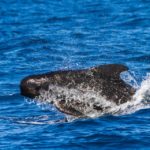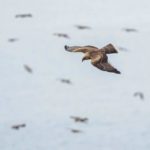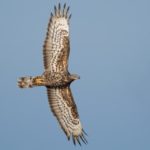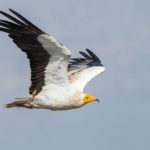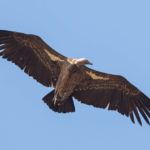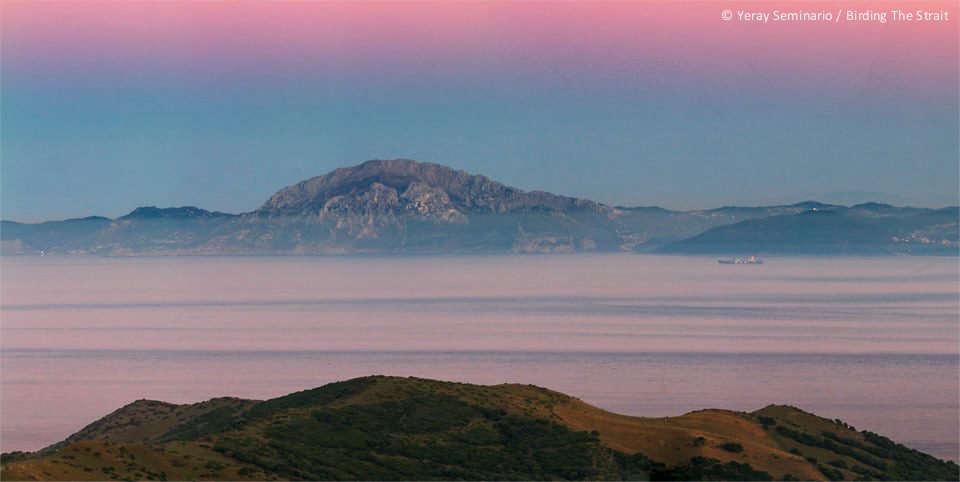
Strait of Gibraltar Birding Tour
The best bird migration in Spain
Overview
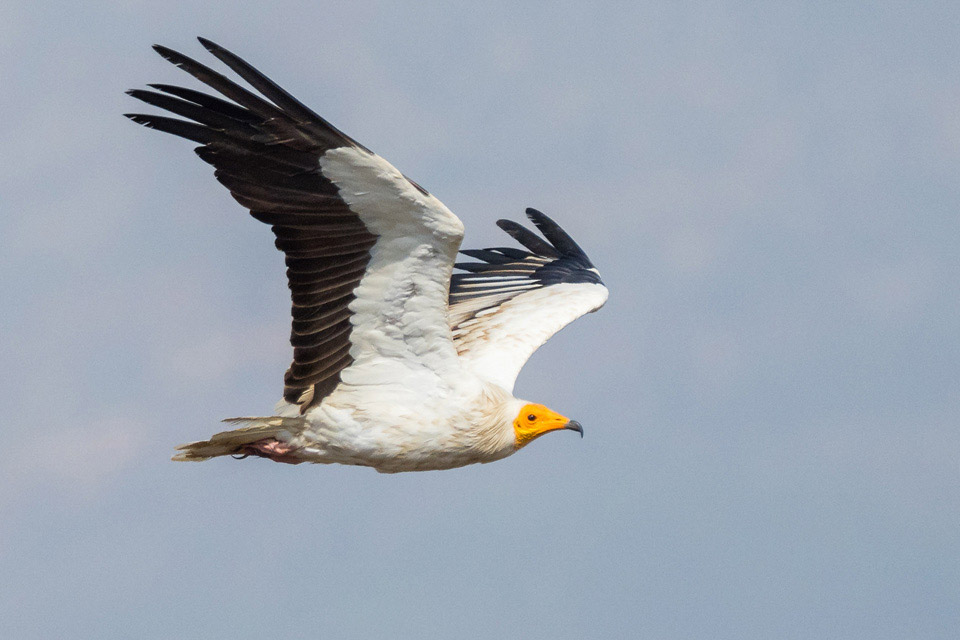
The Strait of Gibraltar is one of the busiest raptor migration corridors on Earth and offers the best bird migration experiences in Spain. The autumn migration is particularly impressive, as vast numbers of raptors cross the sea from Europe to Africa. Some of the most remarkable species include Black Kite (>80,000), Booted Eagle (>10,000), and Short-toed Eagle (>12,000). This is also an excellent time to witness flocks of Black Stork and White Stork on migration. Other raptors frequently observed during this period include Egyptian Vulture, European Honey-buzzard, Eurasian Sparrowhawk, Montagu’s Harrier, Marsh Harrier, Osprey, Lesser Kestrel, and Eurasian Hobby.
In addition to observing active raptor migration, during this Strait of Gibraltar Birding Tour we will explore the former lagoon of La Janda, an extensive agricultural area that supports a rich variety of birdlife. Here we will search for resident raptors such as Spanish Eagle, Bonelli’s Eagle, and Black-winged Kite. We will also look for the reintroduced and critically endangered Northern Bald Ibis, and visit the only known Little Swift colony in Europe — a recent colonizer from Africa.
This tour also includes a visit to Doñana National Park, focusing on one of its least visited yet most rewarding areas on the east bank of the Guadalquivir River. This diverse wetland habitat hosts species such as White-headed Duck, Marbled Duck, and large numbers of shorebirds and Flamingos, as well as the scarce Red-knobbed Coot.
Our base for the tour will be Tarifa, the flagship city of the Strait of Gibraltar and the southernmost town on the European continent.
Last but not least, this trip will take us to several remarkable cultural and scenic landmarks, including the charming city of Ronda, Gibraltar, and the Roman archaeological site of Baelo Claudia.
Itinerary
Day 1: arrival in SEVILLE, brazo del este and drive to Tarifa
We will meet at Seville Airport or at your hotel of choice and begin our journey with a visit to Brazo del Este, an extensive wetland area on the eastern side of the Guadalquivir River. This site can be exceptionally productive, offering excellent opportunities to observe species such as Purple and Squacco Heron, Western Swamphen, Glossy Ibis, and a variety of migrating waders. We will also look for the localized introduced populations of Yellow-crowned Bishop and Black-headed Weaver.
After a rewarding day of birding, we will continue our drive south to Tarifa, which will serve as our main base for the tour. Overnight in Tarifa.
Day 2: Los Lances, Migration Observatories and La Janda
After breakfast at the hotel, we will visit the nearby Los Lances beach observatory, overlooking a coastal lagoon. Here we will look for Audouin’s Gull, Mediterranean Gull, Kentish Plover, and various Terns. The surrounding pastures are excellent for an array of passerines, including Zitting Cisticola, Tawny Pipit, Corn Bunting, and the Iberian race of the Yellow Wagtail.
Then, we will head to the best raptor migration observatories in the Tarifa area, just as the thermal updrafts begin to form and the movement of raptors intensifies. We will stay in close contact with local raptor counters to ensure we are visiting the most productive spots at the optimal time of day. Remarkable numbers of Short-toed Eagle, Booted Eagle, Black Kite, Marsh Harrier, Montagu’s Harrier, Egyptian Vulture, and Eurasian Sparrowhawk are to be expected.
In the afternoon, we will explore La Janda, a vast agricultural area home to large communities of passerines, waterbirds, and raptors. Montagu’s Harrier, Marsh Harrier, Black-winged Kite, Black Kite, Booted Eagle, and Short-toed Eagle all forage here. This is also one of the best places in Spain to observe Bonelli’s Eagle and the endemic Spanish Imperial Eagle.
Overnight in Tarifa.
Day 3: seawatching from Tarifa, Migration Observatories and Sierra de la Plata
Tarifa Island is the southernmost point in Europe. This island is home to a spectacular Yellow-legged Gull colony, and from here we will enjoy a seawatching session, looking for Scopoli’s Shearwater, Balearic Shearwater, Great Skua, Parasitic Skua, and Northern Gannet. Afterwards, we will spend some time observing raptor migration at one of the local observatories.
During the second part of the day, we will visit the nearby Bolonia and Sierra de la Plata area, within El Estrecho Natural Park, which offers some of the most beautiful scenery in the Strait of Gibraltar — with views of the African coast, sand dunes, cliffs, and the ancient Roman city of Baelo Claudia. The cliffs here host a large Griffon Vulturecolony, and the endangered Egyptian Vulture and vagrant Rüppell’s Griffon are regularly seen as well. This is also an excellent area to observe Blue Rock Thrush, Cirl Bunting, and Thekla Lark.
Overnight in Tarifa.
Day 4: full day in Doñana Nature Reserve
Today we will depart early from the hotel to visit the outskirts of Doñana National Park in Cádiz province (approximately 1 hour and 45 minutes’ drive from Tarifa), on the eastern side of the Guadalquivir River. This is one of the least visited yet most rewarding birding areas of Doñana.
A mosaic of fish farms, saltworks, lagoons, vineyards, and pastures creates a remarkably diverse wetland habitat. Large numbers of Flamingos, waders (around 20 species), Egrets, and Herons are usually present, along with Slender-billed Gull, Little Tern, Caspian Tern, and Western Swamphen. Lesser Short-toed Lark is also commonly seen here.
Some of our main targets will be White-headed Duck and Marbled Teal, which often offer excellent views in the pools. We will also have the opportunity to see Little Swift as we visit the only breeding colony in Europe.
Overnight in Tarifa.
Day 5: Barbate Marshes, Northern Bald Ibis and Whale Watching
After breakfast at our hotel, we will drive along one of the best-preserved coastal areas of Spain. Our route will take us to the Barbate Marshes, a mosaic of tidal channels, saltpans, and scrub. Here we can expect good flocks of waders and gulls. Stone-curlew (aka Eurasian Thick-knee) often hide among the islets of the former saltworks, while Greater Flamingo are frequently seen feeding in the shallows. This area can also be productive for migrating passerines that take cover in isolated tamarisks or forage on the ground, such as Tawny Pipit and Greater Short-toed Lark.
We will also look for the critically endangered Northern Bald Ibis. Thanks to a successful reintroduction project, this remarkable species is once again breeding in the Strait of Gibraltar, with more than 22 pairs and 90 individuals recorded in 2017. This offers a unique opportunity to observe and photograph one of the rarest birds on Earth.
In the afternoon, we will take a whale-watching trip. The nutrient-rich waters of the Strait support three resident species of dolphins — Common Dolphin, Striped Dolphin, and Bottlenose Dolphin — as well as Long-finned Pilot Whale. Migratory species also pass through during our tour dates, including Sperm Whale and Fin Whale.
Overnight in Tarifa.
Day 6: Grazalema and Ronda Mountains
Today we will head inland, into the mountains of Cádiz and Málaga provinces — a radically different landscape. The dramatic limestone outcrops create beautiful scenery and are home to the Spanish Ibex. Here, we will have the chance to observe Black Wheatear, Rock Bunting, and Rock Sparrow.
In terms of raptors, Griffon Vulture is widespread, and we will also look for Bonelli’s Eagle and Golden Eagle. Along the way, we will pass through several Pueblos Blancos (“White Villages”), typical of this region of Andalusia.
We will spend the afternoon in Ronda, one of Spain’s most charming historical cities. The city sits atop an enormous rocky plateau, about 750 meters above sea level, where Crag Martin, Alpine Swift, and Red-billed Chough are common, and Peregrine Falcon of the Mediterranean brookei subspecies also breed.
Ronda, with its iconic bridge and historic bullring, is considered the birthplace of modern bullfighting.
Overnight in Ronda.Day 7: osuna and drive to seville Airport
On our last day of the Strait of Gibraltar Birding Tour, we will spend the morning exploring the Osuna steppes, an open landscape of farmland and rolling plains that provides excellent birding opportunities. Here we will look for Great Bustard and Black-bellied Sandgrouse, two of the most iconic steppe species of southern Spain. Other birds typical of this habitat, such as Calandra Lark, Little Bustard, and various raptors, may also be seen. This will be a wonderful way to conclude our tour and say “until the next time!”
* Note: we will keep the itinerary flexible in order to maximise our chances to get the best possible migration experience.
Species
Species of interest on the Strait of Gibraltar Birding Tour
- Marbled Duck (Marbled Teal)
- White-headed Duck
- Red-legged Partridge
- Greater Flamingo
- Northern Bald Ibis
- Little Bustard
- Western Swamphen
- Red-knobbed Coot
- Kentish Plover
- Slender-billed Gull
- Audouin’s Gull
- Mediterranean Gull
- Little Tern
- Whiskered Tern
- Scopoli’s Shearwater
- Balearic Shearwater
- Egyptian Vulture
- Eurasian Griffon (Griffon Vulture)
- Rüppell’s Griffon (Rüppell’s Vulture)
- European Honey-Buzzard
- Short-toed Snake-Eagle
- Booted Eagle
- Spanish Eagle (Spanish Imperial Eagle)
- Bonelli’s Eagle
- Montagu’s Harrier
- Eurasian Sparrowhawk
- Black Kite
- Black-winged Kite
- European Turtle-Dove
- Red-necked Nightjar
- Alpine Swift
- Pallid Swift
- Little Swift
- White-rumped Swift
- European Bee-eater
- Iberian Green Woodpecker
- Lesser Kestrel
- Iberian Grey Shrike
- Woodchat Shrike
- Calandra Lark
- Mediterranean Short-toed Lark
- Thekla’s lark
- European Red-rumped Swallow
- Sardinian Warbler
- Western Olivaceous Warbler (Isabelline Warbler)
- Black Wheatear
- Western Black-eared Wheatear
- Blue Rock-Thrush
- Spotless Starling
- Western Yellow Wagtail
- Tawny Pipit
- European Serin
- Cirl Bunting
- Rock Bunting
- Corn Bunting
- Spanish Sparrow
- Rock Sparrow
What’s included
The price of this Strait of Gibraltar Birding Tour includes:
- All accommodation from day 1 until day 7 (6 nights).
- All meals, starting with lunch on Day 1 until breakfast on Day 7. This includes 1 drink with every meal and water during the whole duration of the trip.
- Transportation in a comfortable vehicle for 5 or 9 pax depending on the final number of participants.
- Programmed entrance fees as in the itinerary.
- A specialised birding guide fluent in English with extensive experience in Tarifa and the Strait of Gibraltar.
- Welcome package with itinerary, travel information and checklist of the birds of the region.
Items not included in the price:
- Any flights.
- Extra drinks.
- Tips in hotels, service and guides.
- Personal travel insurance.
- Personal items.
For further details on bookings and cancellations, you can check out our general Terms and Conditions.
If at any time you have questions about this trip, payments, or other related topics please feel free to contact us.
DATES & PRICES
Tour Basics
- Guides: Javi Elorriaga and Yeray Seminario, local guides from Birding The Strait who are based in Tarifa.
- Length: 7 days.
- Number of participants: 7.
- Lodging: Very good, comfortable and strategically located accommodation.
- Food: excellent, traditional Spanish with some international food. Mesón de Sancho manages one of the most renowned restaurants in the region.
- Weather: warm temperatures throughout most of the trip. A jacket and a sweater are recommended for evenings. A rain jacket can be useful for the whale watching boat trip.
- Difficulty: easy, short walks and gentle pace. For the most part, short drives with just a couple of days with drives over 1.5h.
Tour Gallery
